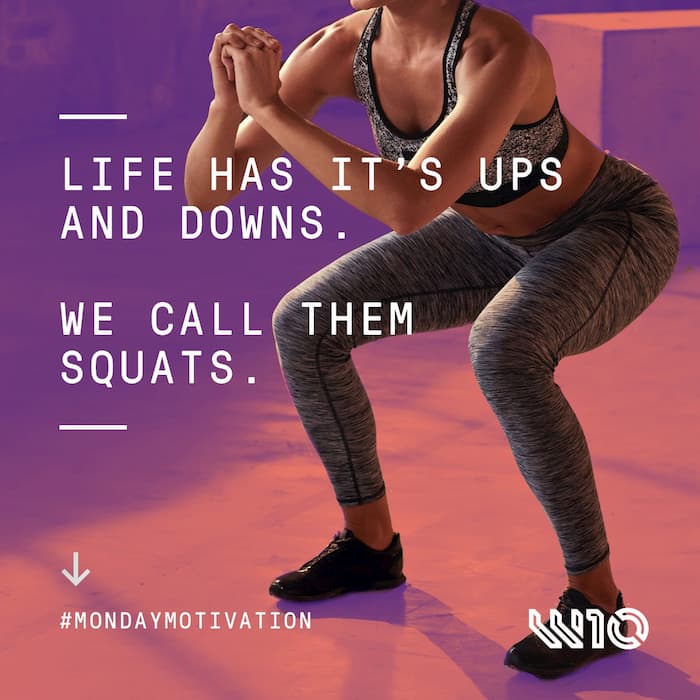
Categories
4 Tips to a Better Squat
Now anyone that knows me, knows that I’m a huge fan of squats and I believe that developing a good squat should be the foundation of any good training program. So here are four top tips to help you improve your squat and to keep you getting stronger.
1. Mobility:
I know it’s boring and very un-sexy but having enough mobility to work the squat through a full range of motion is essential for continual improvement. Full range of motion squats will not only maintain optimal mobility of the ankle, hips and upper back but also ensure that you are getting stronger in that range. The lower your hips descend into the squat, the greater the backside works – and we all want a good bum right? So if you lack the mobility to get all the way down, I would highly recommend that you spend some time working on your mobility if you want to keep yourself moving forward and stay injury free.
2. Keep your back tight
All too often I see people squatting with little regard to what their upper back is doing. This is either due to a lack of understanding of the movement or they are being lazy! During the squat the back has to stay upright and locked, and the last thing you want to see is any loaded flexion (bending forward) of the spine. This is where the set up is important. I get everyone I coach to squeeze their shoulder blades together, pull the bar into the back using their lats, with elbows forward and their core braced. Notice I said core and not abs, what we are looking for is tension around the whole trunk. This braces the spine into neutral and is a much safer position to be in with a loaded bar on your back.
3. Keep the weight on your heels
Well technically speaking you are keeping the weight on the rear of your foot, think ball of the big toe backwards. You want to avoid any weight shifting on the feet throughout the movement and attempt to get the feeling of your feet being bolted to the floor. This is important as where your weight is on your feet relates to the muscles you will use during the movement. When the weight is on your toes you will favour the quads, where as when the weight is on the heels, you will get the backside working more, which is what we want. So check your feet.
4. Check your ego (guys in particular, take note)
You need to understand the difference between a technical max and a true max. A true max is the maximal amount of weight you can stand up with. These tend to look a little ugly and are not how you would want every lift to look. A technical max is the amount of weight you can lift with perfect form, and how you would want most of your reps to look. Now I’m not going to say that you should never test your true max, but understand that this comes with its risks, and continually lifting in this form will not only lead to issues in the future, but you are of course also teaching yourself to lift with poor form – we adapt to what we repeatedly do. This is where we need to check our ego. We all want to lift heavy, but for better progress in the squat I tend to use technical maxes to calculate my training loads and then go for broke when testing. Now for some people this might mean dropping the load a little bit to allow better technique, but your body will thank you for it in the long run.
Getting strong isn’t only about lifting heavy things; it’s also about respecting the movements and continually trying to improve your technique, so that you can lift heavier loads safer and for longer. Put these into practice and let me know how you get on.
Stay strong.
Correct Squat Technique
Squat Technique: Part 1
Squat Technique: Part 2
If you have any questions on the above or would like some advice on how we could help you with your fitness goal, don’t hesitate, visit our personal training gym in Vauxhall and try one of our personal training sessions.
Related Articles:
- Squat Four Ways
- Squat to Improve Your Fitness
- Beginners Guide to the Squat
- A Deeper Look at The Squat
- Are Squats Bad for My Knees?


